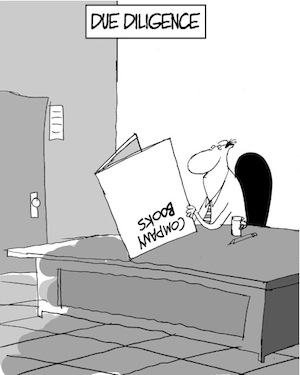| Does the “free range” chicken actually venture outside or is the label a misleading technicality? The door was left open and the chickens elected to remain inside. They may still carry the label “free range” on their package.
Will the anti-depressant give us peace of mind without creating sexual dysfunction and severe relationship issues?
Can we trust the pharmaceuticals to reveal the real risks?
Why did the incidence of breast cancer decline dramatically when the use of hormone supplements dropped off?
“Get real!” is a rallying cry for those who wish to cut through the hype, the exaggeration and the pseudo-science that is often used to promote an idea, a product or a plan of action.
Sadly, given the prevalence of distortion, skepticism is warranted when anyone is pitching their wares, whether they be manufactured goods, news, government policies or candidates. Sadly, any expectation of verity is naively old-world these days as simulacra and the plastic often substitute for the real. Virtual reality shoves the other reality into the background, as the hip version is often more attractive and entertaining than the original.
Beth Orton sings . . .
- “Reality never lives up to all that it used to be.” Later she adds, “The best part of life, it seemed, was a dream.”
- Lyrics from “Best Bit” on her record Pass in Time (2003)
This chapter is closely related to Chapter 3 - Challenging Myths and the Mythic Leader. In that chapter the focus for the organization was internal. “What’s going on in here? Does the leader know what she/he is doing?”
Now the focus turns to the outside. “What’s going on out there? What is really happening? Does their leader know what she/he is doing?”
Fraud is not new to our experience but it may be that we are reaching an apogee as both the frequency and the prevalence of distortions escalate. In his 2007-01-08 New Yorker article, “Open Secrets — Enron, intelligence, and the perils of too much information,” Malcolm Gladwell suggests that the nature of information is growing so complex that many of our challenges have shifted from puzzles (that might be solved) to mysteries (which might not). Reviewing the Enron accounting scandal, he points out that the company actually made public much data that would counter rosy projections but the meaning of that data was lost in a fog bank of complexity that allowed rosy projections to dominate perception.
1. Perception Management
Orwellian? The term “perception management” was first coined by the Pentagon.
The U.S. Department of Defense (DOD) gives this definition:
- perception management—Actions to convey and/or deny selected information and indicators to foreign audiences to influence their emotions, motives, and objective reasoning as well as to intelligence systems and leaders at all levels to influence official estimates, ultimately resulting in foreign behaviors and official actions favorable to the originator’s objectives. In various ways, perception management combines truth projection, operations security, cover and deception, and psychological operations. (Source: http://www.globalsecurity.org/military/ library/report/call/call_03-18_ch-1.htm)
Closely related to “spin,” perception management is a polite substitute for harsher terms like propaganda and lying. When corporations indulge in predatory or harmful practices, they often hire PR firms to help them do damage control. A company known for exploiting its workers and acting miserly with health benefits will saturate evening TV with ads interviewing workers purring about their wonderful benefits.
Governments intent on relaxing anti-pollution standards will mask their programs with labels like “clean air.” Intent on breaking down the public schools to open them up to free market competition, they call the law “No Child Left Behind.”
In an age of spin, misrepresentation is habitual, skilled and often quite subtle. As a matter of protection in both the marketplace and the marketplace of ideas, the buyer and the citizen must beware. Words of mass deception (WMDs) have become commonplace.
2. Step One in Debunking - Attitude
Sad to say, debunking begins with skepticism and incredulity, an attitude of disbelief and doubt. Without succumbing to total cynicism, leaders and team members must adopt a quizzical approach to the many proposals, propositions and assertions arriving on a weekly or daily basis. The authors of these proposals are often schooled in marketing ideas by packaging them to be especially attractive to the target audience (mark) and may have shown only the best features or used some trompe l’oeil (French for visual trickery) to sell their idea.
Trust is often dangerous in the current cultural context. Careful decision-making requires peeling back the layers of packaging to find out how much substance lies below.
3. Debunking Claims of Educational Success
In the world of education, we find test scores and so-called scientific research being used to push particular programs, sometimes on a national level. While these claims may be impressive on the surface, sometimes they collapse under close scrutiny.
The Director of Reading First for the U.S. Department of Education, Chris Doherty, claimed that he could tell New York which reading programs worked and which ones did not, yet he had managed a program using one of these so-called proven programs in Baltimore where they failed in fifteen schools. Note article, “Beltway Bosses: It’s Beltway or the Highway — DC Reading Bosses Dictate Programs for the Big Apple” at http:// nochildleft.com/2004/feb04ourway.html.
The foundation that funded this failed program admitted failure in all but one school where there was a sudden miracle.
The Abell Foundation published the following report on its Web site:
- Beginning with six pilot schools and eventually expanding to 18, implementation proved extremely difficult, for the same reasons that plague most school reform efforts: high teacher turnover, constant external demands that distract schools from focusing on instruction, weak commitment by school leadership, and the often intractable social and academic deficits typically found in children raised in poverty. Though there were some bright spots, all of these factors led to only incremental progress in student achievement in the project’s first four years.
- Source: http://www.abell.org/abellprograms/baltimore.html
Given this general failure, it was a bit hard to accept the claims of sudden miraculous progress at one school, the City Springs Elementary School, where scores suddenly skyrocketed in a single year. Proponents of the program employed, Direct Instruction, even created a movie about the school called “The City Springs Miracle.”
A quizzical approach would probe to see if any factors or changes in the school other than the instructional program might have explained the sudden increase in scores.
Looking past the movie to district reports of enrollments for schools, the debunking thinker would learn that the school’s student enrollment changed dramatically during the year of the miracle.
In 2001—2002, the percentage of free lunch students was 86.4, but it dropped in 2002—2003 (The year of the miracle!) to 39.5. That is a HUGE shift in socio-economic status and since school performance is often associated with degree of poverty, it seems we have non-comparable groups. Who were these new children, how were they chosen and where did they send the other presumably lower-scoring students?
The total enrollment of the school went from 290 in 2000— 2001 to 428 in 2001—2002. That is a HUGE change. Many new children not there when the program started, many of higher socio-economic status.
4. Due Diligence
In the world of business, when one company considers buying another, the team responsible for the purchase is expected to perform “due diligence” — a thorough examination of the books and records of the firm under consideration to make sure they are who they claim to be. In an age of creative accounting (often called Enron accounting), the numbers presented may not always capture reality.
Experts in mergers and acquisitions are skilled at pulling away the surface layers until the fundamentals are revealed and the true nature of the business is evident.
Is this company actually making money? Will this company be making money next year?
The Web lists dozens of question lists that might guide a company through due diligence, but many require purchase. One company, Starlight Capital, offers hundreds of questions by category for free at http://www.starlightcapital.com/investment- banking-financial-consulting/about-us/
The following list is a small sample aimed at some of the key financial issues:
- • How well do financial projections correlate to financial history?
- • Are customers increasing in numbers and billings?
- • How are collections?
- • Are there any off-balance-sheet contingencies or assets?
- • Do assets appear overstated? Are liabilities understated?
- • What is the company’s valuation? What is the formula?
While usually applied to businesses looking to buy other businesses, the term “due diligence” is an appropriate way to capture the kinds of thinking and questioning required by citizens, consumers and decision-makers across a host of industries and institutions when spin, marketing and perception management is abundant and unrestrained.
5. Postscript
In a February 10, 2011 article, the Washington Post reported that D.C. schools chancellor Michelle A. Rhee "Faces renewed scrutiny over depiction of students' progress when she taught."
According to this article, Rhee made a claim of success in her resumé while applying for the D.C. job that may not stand up to scrutiny:
- At issue is a line in Rhee's resume from that year that described her record at Harlem Park Elementary School: "Over a two-year period, moved students scoring on average at the 13th percentile on national standardized tests to 90 percent of students scoring at the 90th percentile or higher."
On Wednesday evening, Rhee said she would revise that wording if she could. "If I were to put my resume forward again, would I say 'significant' gains?" Rhee said. "Absolutely."
G.F. Brandenburg, a former D.C. teacher has provided the debunking of Rhee's claims on his blog. "The Rhee Miracle Examined Again – By Cohort"
How ironic that a national leader pushing for "value added" as a way of judging teachers invented a way of adding value to her resume and her record that she cannot validate or verify!
|


